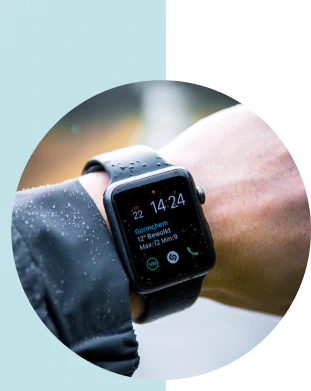
The Cloud is everywhere
Netflix, Spotify and Co. – How the cloud is changing our everyday lives
In the constantly evolving technology landscape of our time, the cloud has proven to be a true game-changer, revolutionizing the way we store and use data. But while many perceive the cloud as a distant concept reserved for tech enthusiasts and enterprises, it has now become an integral part of our everyday lives. From streaming services to smart home devices, without the cloud, many aspects of our daily routines would appear quite outdated! In this blog post, we’ll take a look at what those areas are.
Entertainment and Media
The cloud has significantly changed the way we consume media. Streaming services like Netflix, Spotify and YouTube rely heavily on cloud infrastructure to seamlessly deliver content to our devices. Gone are the days of purely local data storage, the cloud allows us to access extensive libraries of movies, TV shows, music and podcasts from anywhere at any time.
We’ve become so accustomed to this concept of constant availability of media in seemingly endless quantities that it’s hard to imagine what it was like when watching movies over the internet was synonymous with “illegal downloads.”

Communication and collaboration
Cloud-based communication tools have revolutionized the way we connect and collaborate with others. Apps like WhatsApp, Skype and Slack use the cloud to enable real-time messaging, voice and video calls and file sharing across devices.
Whether it’s staying in touch with loved ones or collaborating remotely with colleagues, the cloud has become an indispensable tool for modern communication. An essential prerequisite for remote work to function, but also for companies to collaborate across national borders.

E-commerce and online shopping
Online shopping has become a routine of our daily lives and the cloud has played a crucial role in this development. E-commerce platforms like Amazon, eBay and Alibaba rely on cloud infrastructure to store and process large amounts of product data, securely handle transactions and ensure a seamless user experience. This is especially critical on record-breaking days like Black Friday or Cyber Monday, or in general during the Covid pandemic, when online demand hit the roof. The cloud allows us to conveniently browse, purchase and have millions of products delivered. So the cloud has also significantly changed the way we do shopping.
Smart home technology
The integration of the cloud with smart home devices has turned our homes into well connected and efficient living spaces. Devices like smart thermostats, security systems and voice assistants such as Amazon Alexa and Google Assistant use the cloud to process commands, store preferences and enable remote control. Through the cloud, we can control various aspects of our home, from adjusting temperature to controlling lighting, enhancing comfort and energy efficiency. With the right device, even our refrigerator can tell us via the cloud what we should quickly buy on the way home.
Health and fitness
Cloud technology has also made its way into the realm of health and fitness. Wearable devices such as fitness trackers and smartwatches collect and sync data to the cloud, providing users with comprehensive insights into their activity levels, heart rate, sleep patterns and more. Fitness apps and platforms use cloud infrastructure to store and analyze this data, allowing users to set goals, track progress and access personalized recommendations for a healthier lifestyle. Today, there are even the first systems in cars that can view this data via the cloud and, for example, send an emergency call if they suspect the driver is about to have a heart attack or similar.


Education and e-learning
The cloud has revolutionized education by enabling e-learning platforms and digital classrooms. Online learning platforms such as Coursera, Udemy and Khan Academy use cloud technology to host learning content and make it accessible to learners worldwide. Cloud-based tools also facilitate collaboration between students and educators, promoting a dynamic and interactive learning environment that transcends geographical boundaries.

Conclusion
One thing is undeniable: the ubiquitous presence of the cloud has revolutionized our everyday lives. From how we consume media and communicate to the way we shop, manage our homes, maintain our health and learn – the cloud has transformed many of our routines. This transition has been so seamless that we often don’t notice it until we wonder what it was actually like before our smartwatch reminded us every day that we’d better take a few more steps. The benefits for our lives are clear: increased convenience, efficiency and connectivity make the cloud an indispensable part of modern life.
